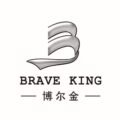
Laser welding technology, as a crucial facet of modern industry, has not only achieved significant success in manufacturing but has also exerted a profound impact on elevating industrial brands. This article delves into how laser welding technology enhances product quality, reduces production costs, fosters innovative design, and fortifies brand sustainability, injecting new vitality into industrial brand upgrades.
I. Improving Product Quality:
Laser welding technology, with its high precision and meticulous control, significantly elevates the quality of products. Compared to traditional welding methods, laser welding eliminates the heat-affected zone, reducing deformations and residual stresses, ensuring high-quality and reliable welds. This improvement in quality enhances product competitiveness and builds trust among consumers, establishing a positive brand image.
II. Lowering Production Costs:
The efficiency and precision of laser welding technology contribute to the reduction of production costs. Unlike traditional welding methods, laser welding requires no additional welding materials, minimizing waste production while lowering maintenance and operational costs. This cost-effectiveness enables businesses to competitively price their products, gaining a larger market share.

III. Fostering Innovative Design:
The flexibility and high level of automation inherent in laser welding technology make innovative design more achievable. Through laser welding, manufacturers can realize more complex and intricate product structures, driving innovation in brand design. Unique product designs not only capture consumer attention but also secure a larger market share for the brand.
IV. Brand Sustainability:
The environmentally friendly characteristics of welding technology positively impact brand sustainability. Laser welding generates comparatively less waste during the process and effectively reduces energy consumption. By adopting this eco-friendly technology, brands not only align with the contemporary pursuit of sustainable development but also establish an environmentally conscious brand image, attracting consumers with a heightened environmental awareness.
Conclusion:
Laser welding technology, with its manifold improvements in product quality, production costs, innovative design, and brand sustainability, emerges as a pivotal force driving industrial brand upgrades. Through the adoption of laser welding technology, businesses not only enhance the competitiveness of their products but also build an eco-friendly brand image, gaining increased recognition and market share in the industry.


